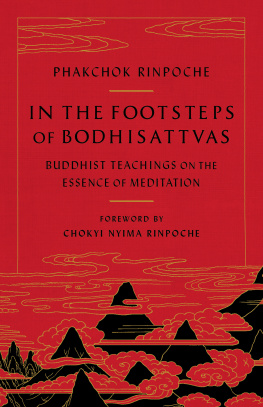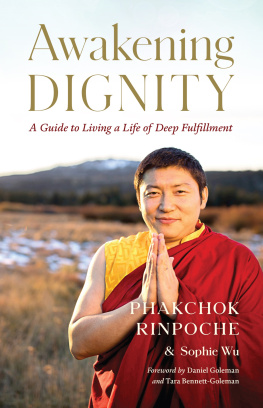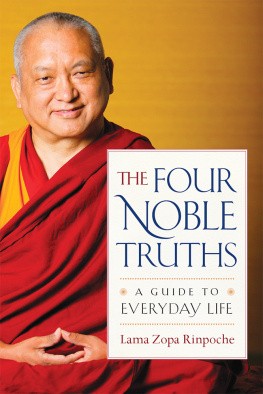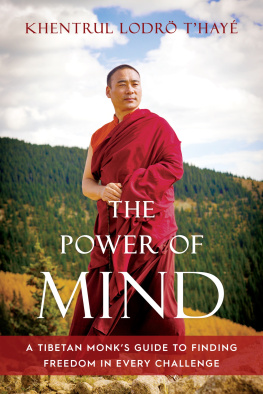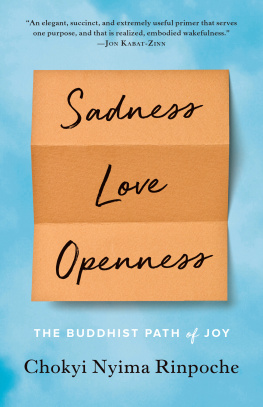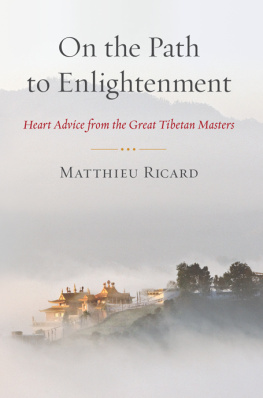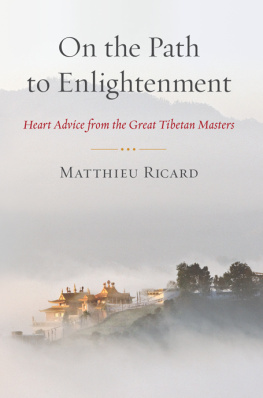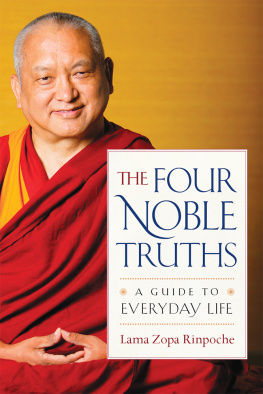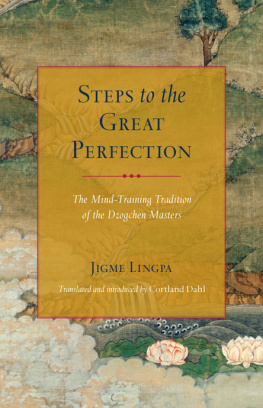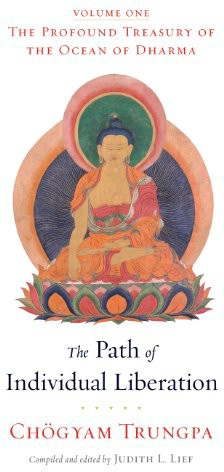Of buddhahoods abundant crop, compassion is the seed.
It is like moisture bringing increase and is said
To ripen in the state of lasting happiness.
Therefore to begin, I celebrate compassion!
1 From Chandrakirtis Introduction to the Middle Way (Shechen Publications, New Delhi, 2004). Translated by the Padmakara Translation Group. 2004 by the Padmakara Translation Group.
Published by
Lhasey Lotsawa Publications
Lhasey Lotsawa Translations & Publications
P.O. Box 19704
Kathmandu
Nepal
lhaseylotsawa@cglf.org
First edition 2009. Second edition 2010. Digital edition 2012.
2009, 2010, and 2012 by Phakchok Rinpoche.
Calligraphy by Phakchok Rinpoche.
All rights reserved. No part of this book may be reproduced in any form or by any means, electronic or mechanical, including photocopying, recording, or by any information storage or retrieval system, without permission in writing from the publisher.

Atisha Dipamkara Shrijana
(982-1054)
Atisha was a great Indian scholar, and author of numerous texts such as the Lamp for the Path of Enlightenment . He was one of the main teachers at the renowned university of Vikramashila, a strict follower of the monastic rule, and extensively acclaimed for the wholesomeness of his teachings.
He spent the last ten years of his life in Tibet, teaching and translating texts, and was instrumental in reinvigorating Buddhism. His disciples founded the Kadampa School. Khu, Khutn Tsndru Yungdrang, Ngok, Ngok Legpe Sherab, and Drom, Drom-tn Gyalwe Jungne, were Atishas three main Tibetan disciples. They were renowned as the emanations of Avalokiteshvara, Manjushri, and Vajrapani respectively.
The three students collectively asked their master Atisha the following question:
What is the supreme path of all dharmas?

All phenomena are selfless.
When you see this with wisdom,
Suffering will not harm you.
This is the path of purity.
-Dhammapada: verse 279
Khu, Ngok, and Drom: What is the supreme knowledge?
Atisha: The supreme knowledge is the realization of the meaning of selflessness.
How to practice:
- Examine the self.
- Is this self your name?
- Is this self your body?
- Is this self your mind? (Look for the identity of the mind: where it arises from, where it abides, and where it goes.)
- Where is this self?
- Meditation on selflessness. (When you dont find anything truly existent, rest uncontrived in that state. This is very important.)
What to abandon:

Easy to do are things
That are bad and harmful to oneself.
But exceedingly difficult to do are things
That are good and beneficial.
-Dhammapada: verse 163
Khu, Ngok, and Drom: What is the supreme quality?
Atisha: The supreme quality is always thinking for the benefit of others.
How to practice:
- The four immeasurables:
- Equanimity (May all sentient beings abide in great equanimity free of all notions of near and far and free from attachment and aversion.)
- Compassion (May all sentient beings be free from suffering and its causes), tonglen (giving and taking).
- Loving kindness (May all sentient beings have happiness and the causes of happiness.)
- Sympathetic joy (May all sentient beings never be separated from the sublime happiness free from suffering.)
- Relative bodhichitta
What to abandon:
- Anger, hatred, aversion, and unhappiness.

Wisdom springs from meditation;
Without meditation, wisdom wanes.
Having known these
Two paths of progress and decline,
Let a man so conduct himself
That his wisdom may increase.
-Dhammapada: verse 282
Khu, Ngok, and Drom: What is the supreme pith instruction?
Atisha: The supreme pith instruction is always looking at ones mind.
How to practice:
Three levels of practice:
- Active mind: Relative bodhichitta (The thought, May all sentient beings be free from suffering and its causes and attain the state of buddhahood!)
- Less active mind: Looking at your thoughts (shamatha meditation).
- Non-active mind: Unfabricated shamatha meditation, which is free from effort and object.
What to abandon:

Let go of the past,
Let go of the future,
Let go of the present,
And cross over
To the farther shore of existence.
With mind wholly liberated,
You shall come no more to birth and death.
Whoever realizes that this body is just like foam,
Whoever knows that phenomena are like a mirage,
Will break Maras flower-tipped arrows,
And travel on unseen by the King of Death.
-Dhammapada: verses 348 & 46
Khu, Ngok, and Drom: What is the supreme antidote?
Atisha: The supreme antidote is seeing that nothing is existent.
How to practice:
- Active: Burjom , eliminating thoughts as they arise. Try not to express, suppress, ignore, or avoid your emotions.
- Non-active: Meditation that is natural, thought-free, effortless, and unforced. When you practice burjom, examining thoughts with your mind, and dont find anything, rest naturally in that state, uncontrived.
What to abandon:

Do not follow lower teachings.
Do not abide in carelessness.
Do not follow false views.
Do not increase worldliness.
Just as solid rock
Is not moved by wind,
Likewise, the wise are not moved
By praise and blame.
Do not aim at pleasure,
For the loss of pleasure is painful.
For the one who never grasps at pleasure,
There are no bonds.
-Dhammapada: verses 167, 81 & 211
Khu, Ngok, and Drom: What is the supreme conduct?
Atisha: The supreme conduct is going astray from worldly concerns.
How to practice:
- Reflect on the eight worldly concerns:
Attachment to: | Aversion to: |
Gain | Loss |
Praise | Criticism |
Good Reputation | Bad reputation |
Sense pleasures | Unpleasant experiences |
- Reflect on desiring/wishing less, and being content more.
- You have suffering, but you dont suffer. You have attachment, but you dont have clinging like an iron grip. You have ego, I, but you are not attached to self.
- Your attachment to the eight worldly concerns is a measurement of your practice.
What to abandon:
- Jealousy. (Jealousy arises from the eight worldly concerns.)

There is no fire like desire;
No monster like anger;
No net like delusion;
Next page

